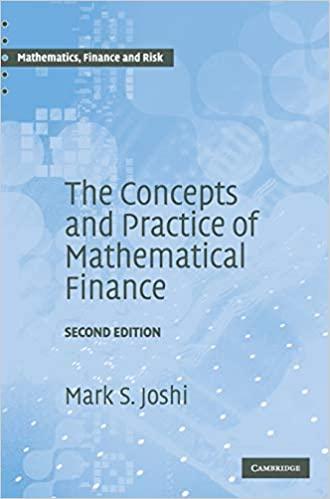
6. Statement 1: If you can find two risky securities with a correlation of -1, theoretically you can construct a risk-free portfolio using the two securities. Statement 2: Stocks A and B have returns that are independent of one another. (i.e., correlation coefficient p zero.) There is no diversification benefit that can be achieved by combining A and B in a portfolio. a. Only Statement 1 is correct. b. Only Statement 2 is correct. c. Both Statements are correct. d. Neither Statement is correct. Two stocks A and B have return and risk information: E(r)-10%, E(n)-20%; A-12%, -1890; a. 10.55% b. 11.43% c. 12.56% d. 13.69% 7. 0.5. what's the expected return on the minimum variance portfolio? 8. Whic h one(s) of the following portfolios cannot lie on the efficient frontier as described by Markowitz? Standard Deviation 15% 7% 21% 36% Portfolio Expected Return 12% 5% 9% 15% a. Only portfolio W cannot lie on the efficient frontier. b. Only portfolio X cannot lie on the efficient frontier. c. Only portfolio Y cannot lie on the efficient frontier. d. Only portfolio Z cannot lie on the efficient frontier. Consider a treasury bill (risk-free asset) with a rate of return of 5% and the following risky portfolio 9. Portfolio A: E(r) Portfolio B: E(r) Portfolio C: E(r) Portfolio D: E(r) 0.15; 0.20 0.10: 0.15 0.12; -0.18 0.18; 0.35 A rational investor must decide his asset allocation by combining the risk-free asset with one of the securities mentioned above. The security the investor would choose would be a. security A b. security B c. security C d. security D 6. Statement 1: If you can find two risky securities with a correlation of -1, theoretically you can construct a risk-free portfolio using the two securities. Statement 2: Stocks A and B have returns that are independent of one another. (i.e., correlation coefficient p zero.) There is no diversification benefit that can be achieved by combining A and B in a portfolio. a. Only Statement 1 is correct. b. Only Statement 2 is correct. c. Both Statements are correct. d. Neither Statement is correct. Two stocks A and B have return and risk information: E(r)-10%, E(n)-20%; A-12%, -1890; a. 10.55% b. 11.43% c. 12.56% d. 13.69% 7. 0.5. what's the expected return on the minimum variance portfolio? 8. Whic h one(s) of the following portfolios cannot lie on the efficient frontier as described by Markowitz? Standard Deviation 15% 7% 21% 36% Portfolio Expected Return 12% 5% 9% 15% a. Only portfolio W cannot lie on the efficient frontier. b. Only portfolio X cannot lie on the efficient frontier. c. Only portfolio Y cannot lie on the efficient frontier. d. Only portfolio Z cannot lie on the efficient frontier. Consider a treasury bill (risk-free asset) with a rate of return of 5% and the following risky portfolio 9. Portfolio A: E(r) Portfolio B: E(r) Portfolio C: E(r) Portfolio D: E(r) 0.15; 0.20 0.10: 0.15 0.12; -0.18 0.18; 0.35 A rational investor must decide his asset allocation by combining the risk-free asset with one of the securities mentioned above. The security the investor would choose would be a. security A b. security B c. security C d. security D







